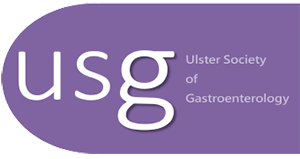Dietary Inflammatory Index and the risk of colorectal polyps within the Tennessee Colorectal Polyp Study
Authors
L. Beth Getty1, Helen G Coleman1, Nitin Shivappa2,3, James R Hebert2,3, Reid M Ness,4,5 Walter E. Smalley,4,5 Wei Zheng,4,5 and Martha J Shrubsole4,5Departments / Institutions
1 Centre for Public Health, Queen’s University Belfast, Northern Ireland. 2 Cancer Prevention and Control Program, Department of Epidemiology and Biostatistics, Arnold School of Public Health, University of South Carolina, Columbia, SC, USA. 3Connecting Health Innovations LLC (CHI), Columbia, SC 29201, USA 4 Veterans Affairs Tennessee Valley Geriatric Research, Education and Clinical Center, Nashville, TN, USA 4 Division of Epidemiology, Department of Medicine, Vanderbilt Epidemiology Center, Vanderbilt-Ingram Cancer Center, Vanderbilt University School of Medicine, Nashville, TN, USAPublication Date
Autumn 2016Aims
To understand the association between intake of dietary factors linked to the inflammatory response and risk of colorectal polyps using the dietary inflammatory index (DII), a previously developed measure of anti- and proinflammatory diet with higher scores referring to more proinflammatory diet.
Methods
The DII was utilised to calculate the risk of developing polyps in a large colonoscopy-based case-control study that recruited 3246 controls, 1354 adenoma patients, 472 hyperplastic polyps (HP) and 363 patients with synchronous HP and adenoma. DII and lifestyle information were obtained through a food frequency questionnaire and telephone interview, respectively. Statistical methods included; unconditional logistic regression models and relevant confounders were tested to calculate odds ratios (OR) and 95% confidence intervals (CI) for polyp risk according to categories of the DII.
Results
Quartiles of the DII were compared, and the highest DII was associated with statistically significant increased risks of HP (OR 1.46, 95% CI 1.06, 2.01 p for trend 0.04), adenomas (OR 1.38, 95% CI 1.12, 1.70, p for trend 0.04), and sessile serrated adenomas (OR 2.43, 95% CI 1.52, 3.89, p for trend <0.001) in comparison to the lowest DII quartile . Similar statistically significant associations were observed between the DII and risks of single or multiple polyps, and polyps located in either the left or right side of the colorectum. The positive association between the DII and polyp risk was consistent across strata of body mass index, smoking status and NSAID use categories. Conclusion: A high DII is associated with the risk of colorectal polyps, therefore promoting the importance of an anti-inflammatory diet may aid the prevention of colorectal polyps, the precursor to colorectal cancer.
Latest News
Gastroenterology FK Meeting Provision and Challenges
Posted on: 2nd April 2021Latest Event
There are no up-coming events.E-Publications
Download our latest Documents


